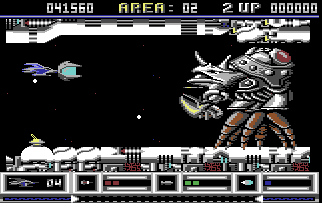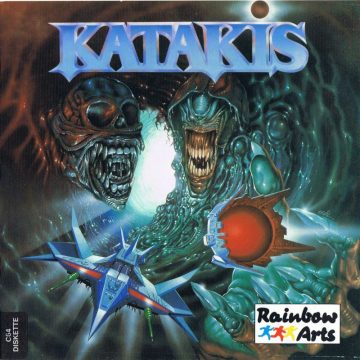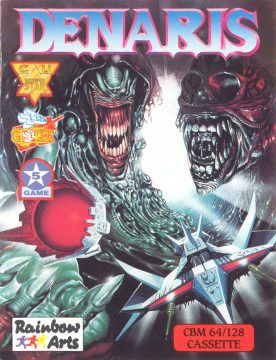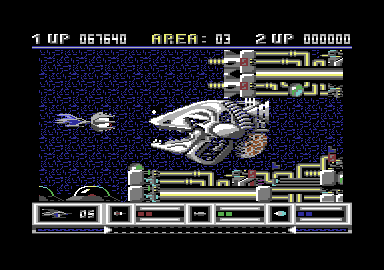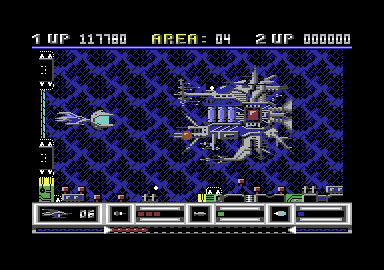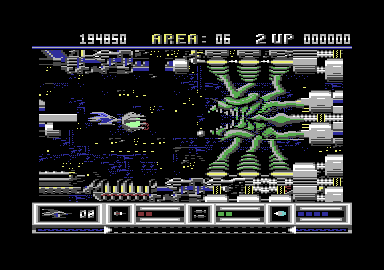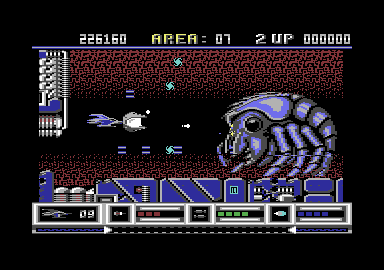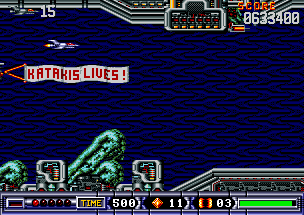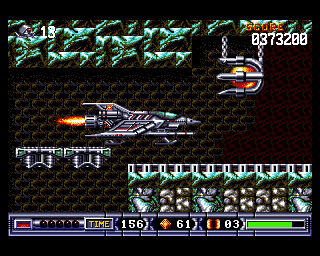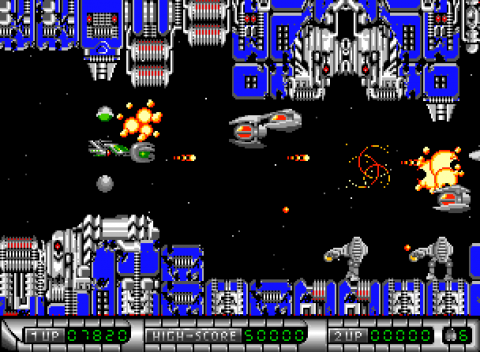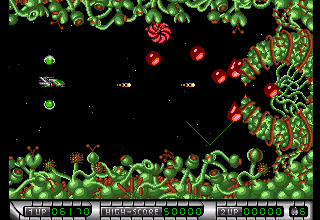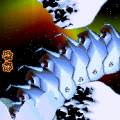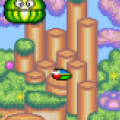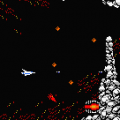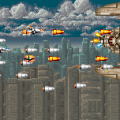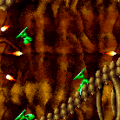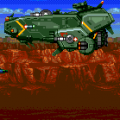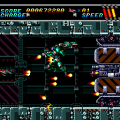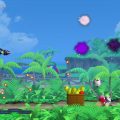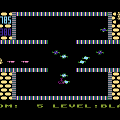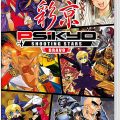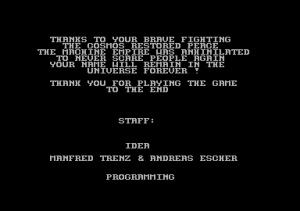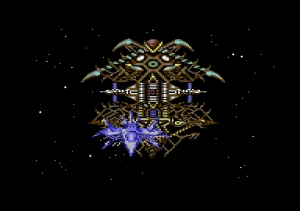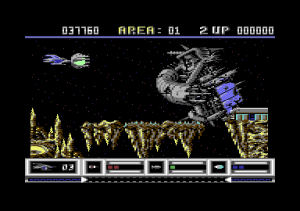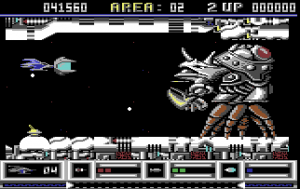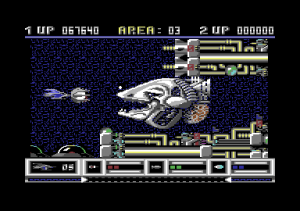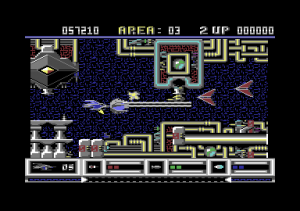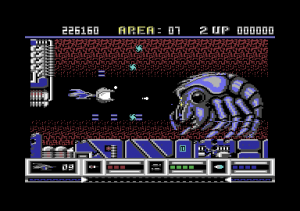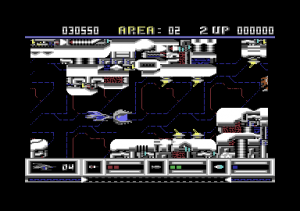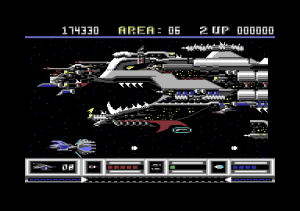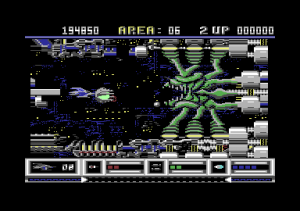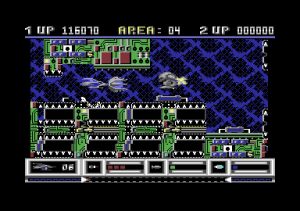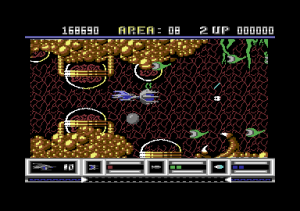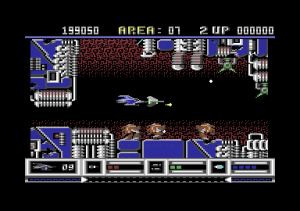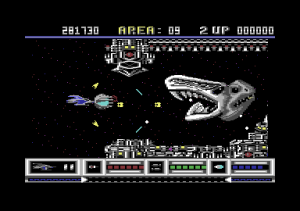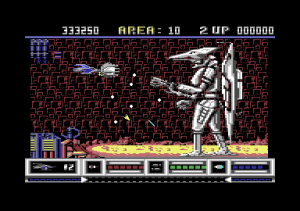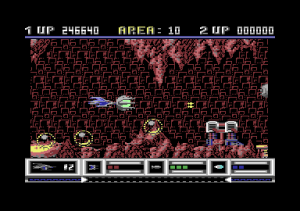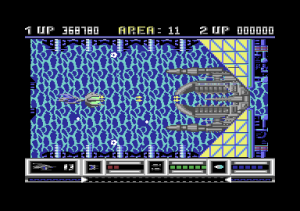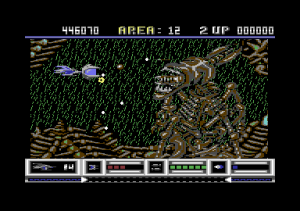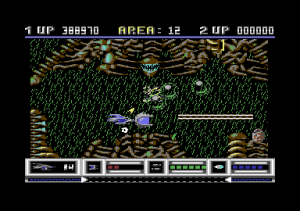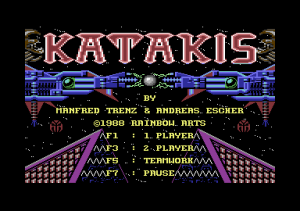The shoot-em-up Katakis on the Commodore 64 (C64) started as a side project of Manfred Trenz (coding, game, and level design) who worked with Andreas Escher (graphics) on the game after working hours at German developer Rainbow Arts. Both men were new in the industry, although Trenz had just finished The Great Giana Sisters, one of the most popular titles for the C64 that was infamous for being given a cease-and-desist by Nintendo due to the game’s similarities with Super Mario Bros. Trenz, who would later cement his reputation as an exceptional game designer and programmer with the Turrican-series, impressed his boss with his Katakis demo and convinced him to turn it into a full-fledged project.
Katakis, a name that was picked from a phonebook, was the result of Trenz’s love for playing R-Type, Nemesis (Gradius outside Europe), and Darius in the arcades. When the game first appeared in 1988, it immediately gave two main impressions to players: that it was dead good, and that it was heavily inspired by R-Type. This resemblance was apparently too obvious, and Activision Europe (a completely different company from today’s Activision), which owned the rights for R-Type, recognized the quality of Katakis which they saw as a threat to their own planned computer ports of R-type. Activision threatened with a lawsuit but offered a deal: Rainbow Arts was supposed to deliver the R-Type ports for the C64 and the Amiga and was in return allowed to sell an altered version of Katakis. A deal was made and ultimately R-Type was released for both systems with Katakis seeing some minor graphical alterations and then sold under the name of Denaris. Quite incredible is that Trenz and his team managed to create a solid C64 port of R-Type in just six and a half weeks, but that is another story.
Katakis features a “Skynet-inspired” backstory revolving around the inhabitants of the planet of the same name who are threatened by the machines they once created. The player is tasked with defeating the machines in a plane dubbed the ‘DS-H75 Eagle fighter’. The game features no less than 12 levels which all have their theme such as an asteroid field, an alien moon, the insides of a huge space ship and an H.R. Giger-influenced world. Every level features its end boss. Enemies are diverse and consist of a wide array of flying ships, robots, bio-mechanical creatures, and turrets.
Graphically, Katakis ranks amongst the most stunning games on the C64 with well-animated and colorful pixel art. It looks fantastic, although not all is original. The ship design and the power-ups style scream Darius, the walking gunner enemies are reminiscent of those found in Gradius and some enemy sprites originate straight from R-type. Yet Katakis also features numerous imaginative graphical ideas. Most of the end bosses look cool and a particularly memorable level is the one that sees the player flying inside a supercomputer which looks like one big printed circuit board complete with chips and capacitors.
From a technical perspective, Katakis is nothing short of amazing for the C64. The game boasts multi-layered parallax scrolling, one level even has six different layers, running at a full 50 frames per second with very little slowdown. Level 7 features the ‘canyon’ scrolling effect featured two years later in MUSHA on the Genesis/Mega Drive only in a horizontal fashion; something few people previously would have considered to be possible on the C64.The parallax layers are all in hi-res mode while some levels have animated backgrounds like the boiling lava of level 10. Also, there is very little flickering despite a large number of on-screen sprites while the animated end bosses are huge for the system.
Composer Chris Hülsbeck, perhaps most famous for his work on the Turrican series, Apidya and Jim Power, is usually a guarantee for fantastic music and his work on Katakis is no exception. The songs are all memorable and the sound effects are punchy and a nice fit to the action. Several tracks are inspired by music that Hülsbeck was enjoying at the time, including “Humanoid Invasion” from Laserdance (track 5), “Alisand” from Hugh Bullen (track 7), ‘My Dream’ from Shamall, and the “Delta Force Main Theme” from Alan Silvestri (track 9). In 2015 Hülsbeck released “The Piano Collection”, an album with piano adaptions of some of his best work, with includes a beautiful track called ‘Katakis medley’.
Game mechanics are mostly based on R-Type, mixed with some elements from Darius. Similar to R-Type, collecting a certain powerup attaches an indestructible force pod to the front of your ship. The force pod can be upgraded twice and comes in three colors: red replaces your main gun with a powerful beam, blue provides you with reflective lasers and green unleashes lots of shuriken-like projectiles that bounce wildly across the screen. The pod can be detached from the space bar, where it acts autonomously from the player. The pod can be attached to the front or rear part of the player’s ship and protects from enemies and bullets. It grows in size by collecting multiple power-ups of the same type. It is also possible to charge a laser blast by keeping the fire button pressed for a while and then releasing it.
In addition to the force pod and the speedups and speed-downs, some foes when killed randomly leave behind colored bubbles (similar to Darius). Grey bubbles just give you a score boost, while yellow ones act like screen-clearing bombs. Most relevant, however, are the green and red bubbles, which upgrade your standard shot and your missiles. Which of the two you get is decided by chance. If you collect a blue bubble, you get a temporary shield that makes your entire ship invincible for some seconds. Upon collecting more bubbles of the same color, the corresponding gauge at the bottom of the screen fills up. Power-up icons are usually available at checkpoints, which makes it possible to recover after dying. There’s also a two players mode in which the second player controls the force pod. This creates an interesting play strategy for the attacker and the defender since the main ship is vulnerable to enemy fire and hazards.
While the game is regularly labeled as nothing but a clone of R-Type, Katakis is very much a game in its own right. The overall feel is very different, there is less emphasis on memorization and the faster scrolling speed and faster moving bullets and sprites lend the game a twitchier feel. With its outstanding graphics and music, deep gameplay mechanics, 12 levels, and addictive gameplay, it is not hard to see why Katakis is often regarded as the very best shoot-em-up on the C64, only rivaled in quality by the mighty Armalyte. Katakis is quite a difficult game which is partly due to an over-enthusiastic collision detection that does not allow even for a pixel of ‘grazing’ and makes it very easy to crash into things. You will get used to this with repeated playing, but a bit more leniency would have been welcome. Also, the game can feel a bit cramped due to the status bars at the top and bottom of the screen which reduce the play area. If the game has a real fault, however, it must be that the attack patterns of the end bosses are rather boring. Except for the bosses of levels 4 and 9, defeating them is mostly about finding a safe spot and unleashing your deadly arsenal till they explode.
The game’s box art depicting the DS-H75 Eagle fighter, the force pod, and two alien xenomorphs is a terrific example of the blatant ripping off of movie covers that was so prevalent in the 1980s (in this case from the 1986 Aliens movie). Despite the legal issues with Activision, Rainbow Arts apparently didn’t see any problem in reusing the Katakis box art for Denaris; only the game title on the cover was changed.
Katakis was ported by Factor 5 to the Amiga and this version saw some changes in the game mechanics and level designs. Compared to the outstanding C64 version, however, this port is somewhat of a disappointment. While the gameplay is solid (although very hard), it lacks the parallax scrolling and in-game music of the C64 version despite the Amiga’s more advanced hardware.
Some interesting references to Katakis can be found in the Turrican games. At the end of level 2-2 of Turrican 2 on the Amiga, the main character takes off in a fighter resembling the spaceship in Katakis. During the take-off sequence, the fighter’s drone pod can also briefly be seen, hanging from the ceiling. There is also an easter egg: before level 3-2’s end boss, a Katakis bonus container ship appears. If shot down, it reveals a “question mark” (?) bonus that, if picked up, makes a helicopter walker robot appear, towing a banner with “KATAKIS LIVES!!!” written on it. The Super NES video game Super Turrican is also set on a planet called Katakis.
Over the years several attempts were made to revive the Katakis legacy. Trenz and Escher worked on Katakis 3D for the Game Boy Color and in-game footage can be found on YouTube from around 2001, although the game was never released. Katakis 2 was formally announced by Trenz in 2011 but this game also never saw the light of day. An iPad version of the C64 version of Katakis was published in 2011. That same year, a fan-made homage to the game called Takatis was released for the PC platform.
While Katakis has its flaws, it is also a brilliant game and a must-play for enthusiasts interested in exploring the C64 shooter library. Do keep in mind that many of the game’s disk images floating on the internet are buggy due to bad cracks and trainers. In 2017 a patch was released that fixed bugs and enabled NTSC support (see link below).
Screenshot Comparisons
Links:
https://www.c64-wiki.com/wiki/Katakis
https://www.wiki.de-de.nina.az/Katakis.html
https://teut.blogspot.com/2013/09/katakis-turrican-co.html
https://www.schnittberichte.com/schnittbericht.php?ID=559514
https://csdb.dk/release/?id=155627
